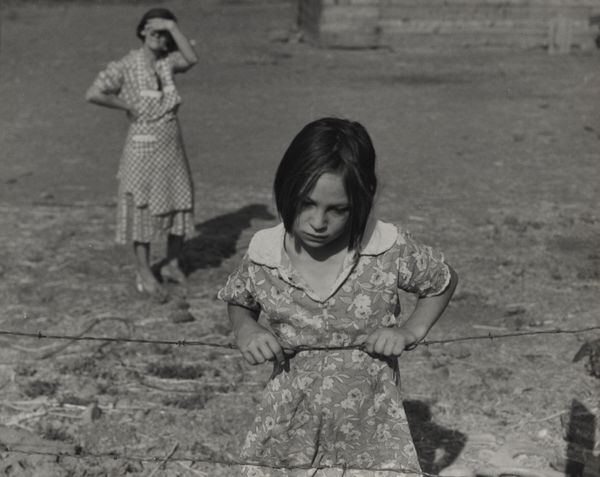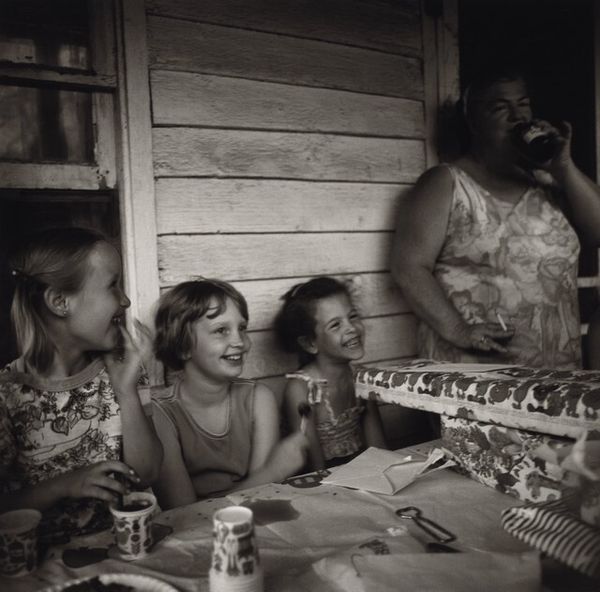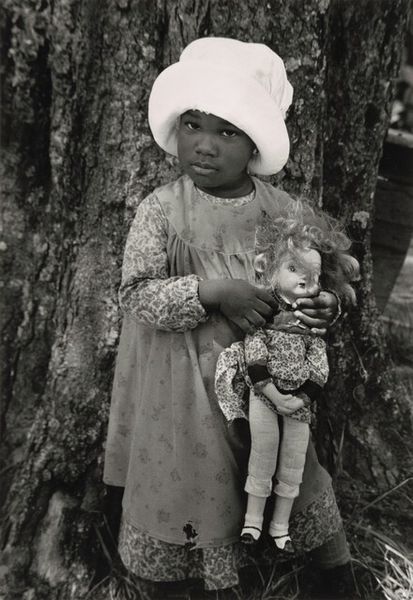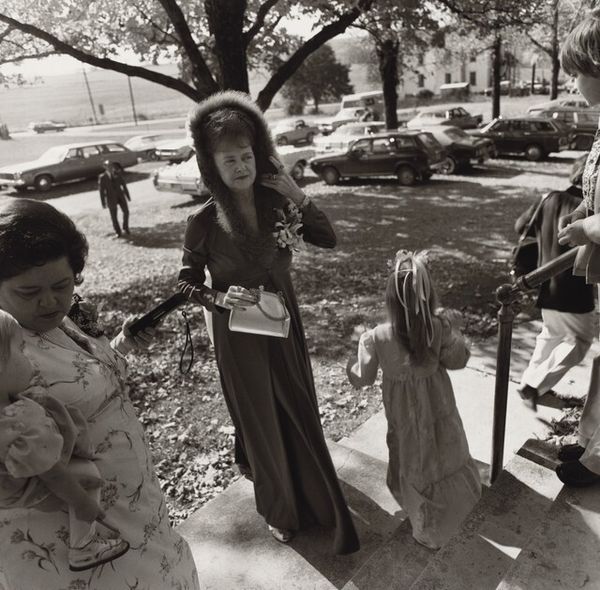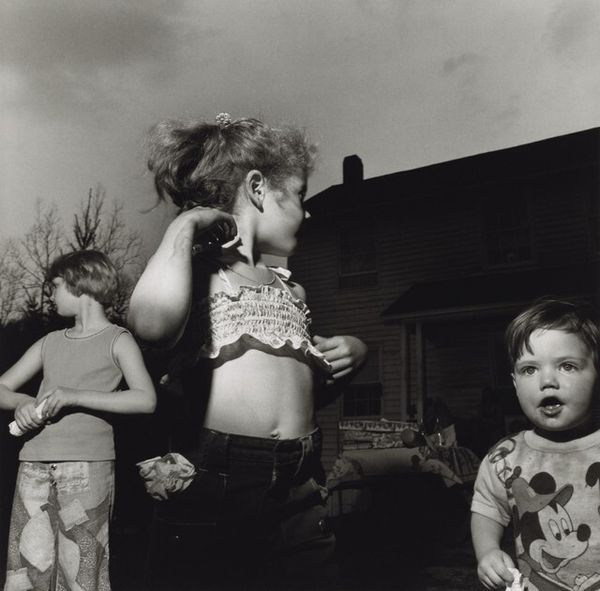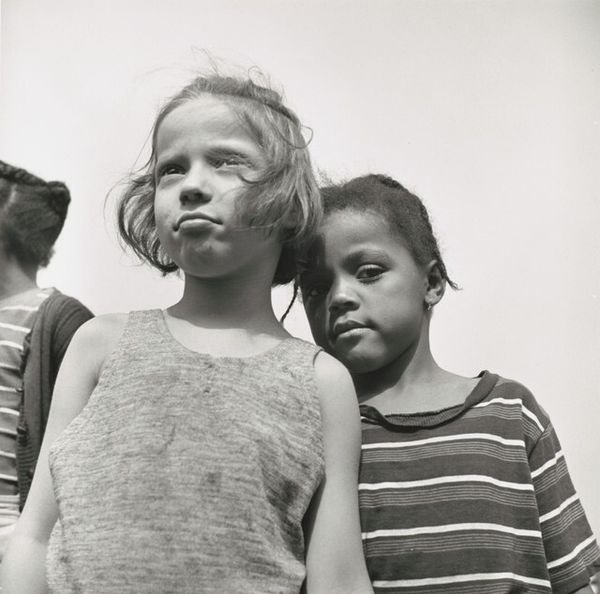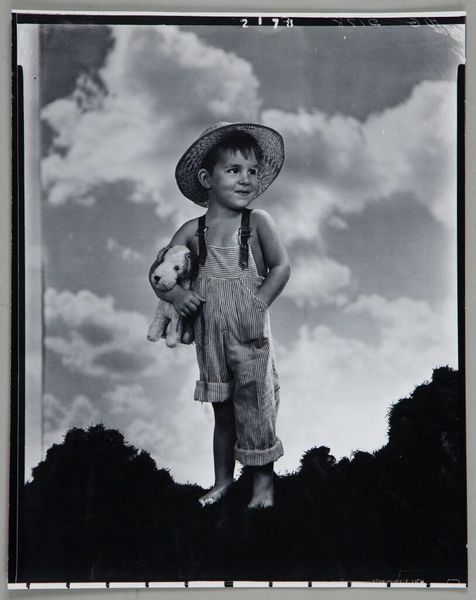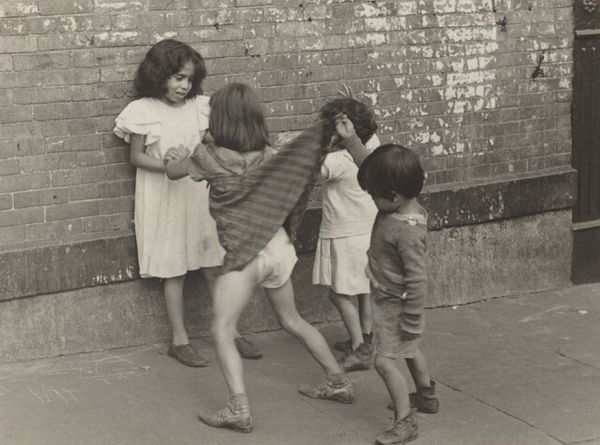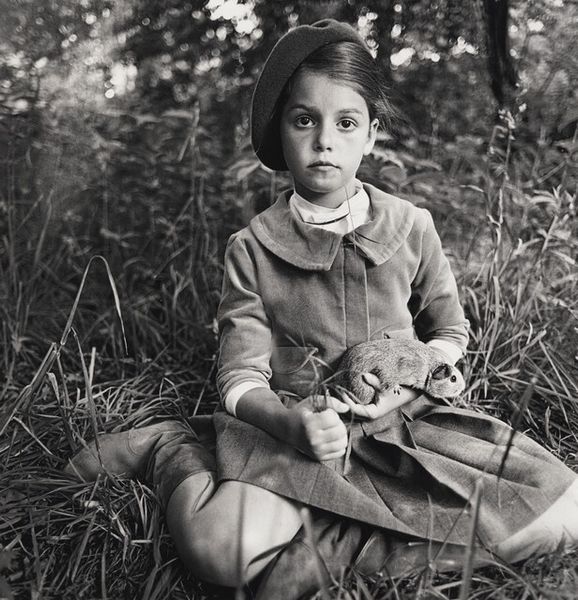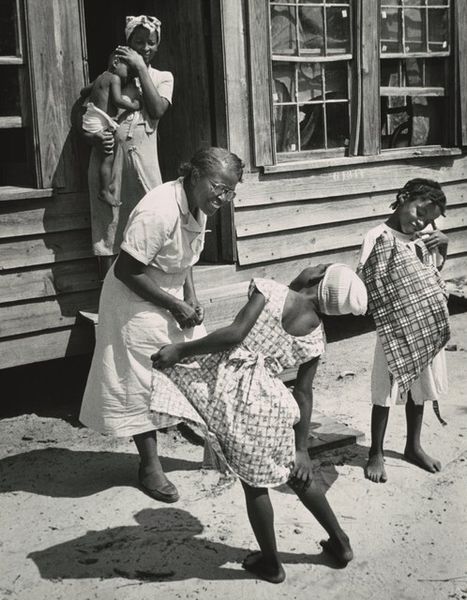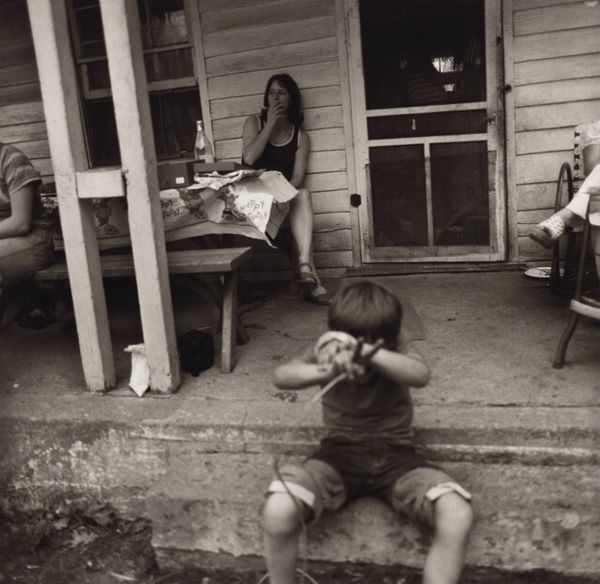
photography, gelatin-silver-print
#
contemporary
#
landscape
#
photography
#
gelatin-silver-print
#
monochrome photography
#
genre-painting
#
realism
#
monochrome
Dimensions: image: 36.9 × 35 cm (14 1/2 × 13 3/4 in.) sheet: 50.5 × 40.4 cm (19 7/8 × 15 7/8 in.)
Copyright: National Gallery of Art: CC0 1.0
Curator: Larry Fink's gelatin-silver print, "Martins Creek Picnic, Pennsylvania" made in 1983 presents a compelling slice of American life. What are your first impressions? Editor: There's a sense of arrested motion. That child, caught mid-swing... it speaks to the transient nature of childhood itself. It’s nostalgic, but also unsettling, perhaps in the ways fleeting moments often are when they’re over. Curator: Absolutely. Fink’s work frequently addresses themes of class and social dynamics, often within the microcosm of seemingly mundane events like a picnic. This particular image, though, operates on a more personal level, doesn’t it? We see children at play. Where does the theme of social dynamics show up for you here? Editor: Look at the composition: The central figure is this fair-haired girl on the rope swing. Behind her and to the sides, you see a motley of other kids: A dark skinned child with his shirt off, the figure by the tree... all under Fink’s soft contrast that nonetheless illuminates them all. You get this feeling of neighborhood and all of what makes up a town’s younger set of faces, all different yet all bound by circumstance. Curator: It's true that Fink had the ability to freeze unscripted life. Thinkers like Pierre Bourdieu talked of "habitus", a set of dispositions we internalize. To me, the body language of those children reveals so much, particularly regarding learned behavior based on race, class and gender. Even the seemingly innocent setting doesn’t negate a deeper, sociological truth of lived inequality in places like small-town Pennsylvania. Editor: Inequality… sure. But Fink’s approach always had an inherent psychological dimension. In that snapshot of American youth, each gesture and gaze carry emotional weight. I'm drawn to that young girl gripping the rope, not simply as a figure trapped by Fink’s flash, but a signifier of our yearning to revisit or recapture past innocence and joy. Childhood holds such an idealized vision, doesn’t it? The artist’s genius lies, I believe, in his ability to use his work to ask just what it’d take to keep from falling…or what would happen if you just let go. Curator: True. It holds space for these simultaneous ideas. Perhaps the power here exists between documentation and dreamy emotional resonance, both pushing us to confront realities, but through vastly different lenses. Editor: An American memory, exposed. Curator: Precisely, it invites scrutiny, and personal reflection.
Comments
No comments
Be the first to comment and join the conversation on the ultimate creative platform.
